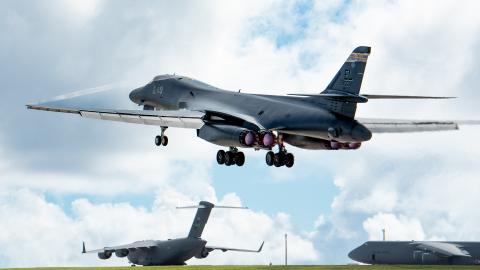Even as national-security adviser Jake Sullivan met with China’s foreign minister in Malta last weekend, China’s military sent more than 100 aircraft and nine ships to the waters around Taiwan. China’s unrelenting pressure campaign in Taiwanese airspace, its significant military buildup, and Xi’s unsubtle hints about using force to absorb the island have led many leaders in the U.S. and around the world to believe that China could one day use force against Taiwan.
Yet the looming threat — however far off it may be — of Chinese action against Taiwan has not led the U.S. government and private sector to make the strategic and regulatory changes needed to hedge against the possibility of major geopolitical shock. The public and private sectors seem to be waiting for the next flash point before acting, and both risk being caught flat-footed.
The Department of Defense is saying all the right things; its reports show the risk of Chinese aggression and the need to increase U.S. deterrence capabilities. But its actions sometimes differ dramatically. For example, it is not aligning its contracting for shipbuilding and missile production to match the threat, nor is it cutting bureaucratic red tape. If the threats are as significant as the Pentagon assesses, they should compel changes immediately.
Guam is a perfect example of the misalignment between the DOD’s words and its actions. The Indo-Pacific commander, Admiral John Aquilino, declared that the U.S. needs to “move with a sense of urgency in order to provide the capabilities that both defend and . . . project power from Guam.” But DOD’s self-imposed bureaucratic hurdles are almost farcical. Take one example: The Pentagon is prioritizing its efforts to preserve a bird — one that does not live on Guam and cannot be reintroduced to the island any time soon — over needed capabilities.
In World War II, U.S. ships coming from the Philippines carried a stowaway, the brown tree snake. This snake wrought havoc on the local fauna, leading to the extinction of the Guam kingfisher on the island in 1988. Conservation efforts are focused on reintroducing the bird (which now lives in captivity and is being introduced to the predator-free Palmyra Atoll) to Guam after the brown tree snake is eradicated. The military agreed to set aside five acres of kingfisher-rehabilitation habitat for every acre it develops on Guam, under the laudable goals of the Endangered Species Act. Yet, despite millions of dollars poured into the effort, the island is failing to eradicate the brown tree snake, with ten to 21 snakes still populating each acre of jungle.
The Department of Defense owns roughly one-third of Guam. At the moment, it is working to build up its presence and capabilities there, but it is running out of land because it gave so much to the kingfisher.
The secretary of Defense has the authority to obtain an exemption to the ESA if it’s needed for national security — which he should, because it is. But he hasn’t. DOD, Congress, and the government writ large should take the time lines of potential threats more seriously as they develop military capabilities and slash regulatory burdens as needed to meet those time lines.
The government should also not be preparing alone.
The private sector recently survived the Covid lockdowns, which decimated supply chains. And the economic shocks from Russia’s illegal invasion of Ukraine are still affecting businesses. Just last week, Heineken had to sell its business in Russia for only a dollar so it could leave the market entirely, at a loss of $325 million. Yale is tracking more than 1,000 businesses that have shuttered in Russia — and the U.S. private sector’s exposure to Russia is nothing compared with its exposure to the Chinese market.
The same threat hanging over DOD should compel the private sector to minimize its China exposure now, because the U.S. government will impose devastating sanctions in response to any action China takes against Taiwan, and those sanctions will unquestionably affect U.S. businesses.
The regulatory environment is already nudging U.S. businesses to keep bad actors out of their supply chains. Congress passed the Uyghur Forced Labor Prevention Act, which obliges companies to dive into their supply chains at an unprecedented level. It presumes that any goods in the supply chain that touched the Xinjiang region were made with Uyghur forced labor and are, therefore, illegal to sell in the U.S. market. And while China is restricting information, U.S. companies have to start learning — often through AI and machine-learning models that require less information to develop risk assessments — who their suppliers are and where the risks might be.
Businesses understandably don’t want to upend their supply chains if it isn’t necessary. Yet in a foggy geopolitical environment where a real risk of an economic flash point exists, proactive action now may save a lot of money — and headaches — in the long run.
















